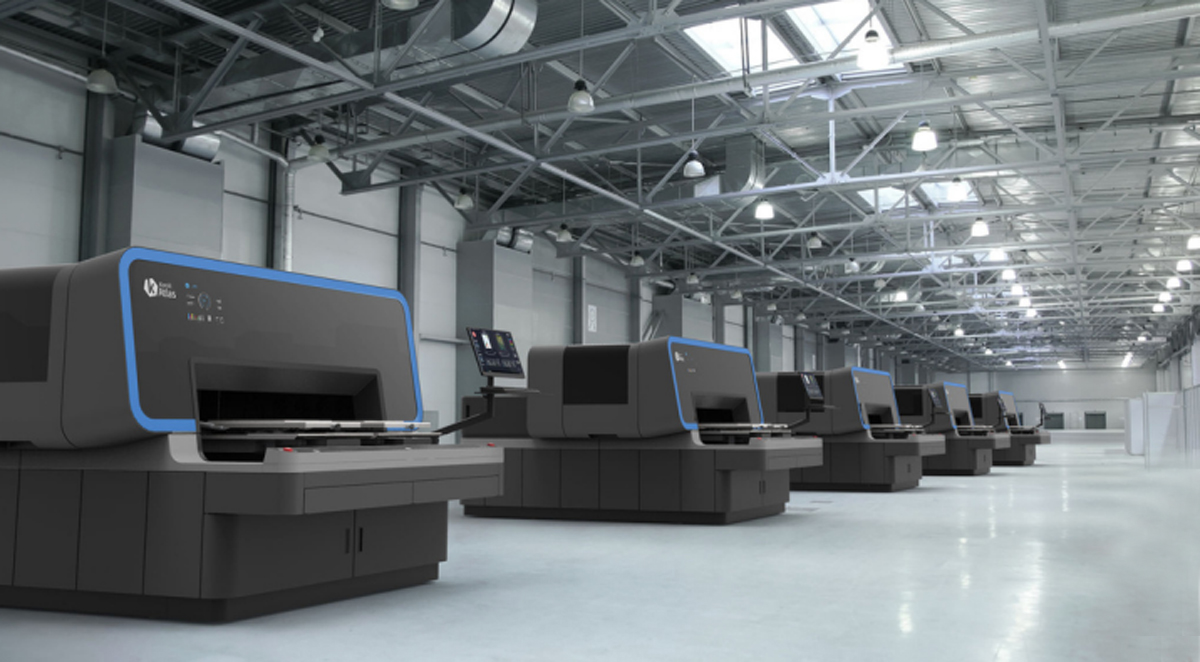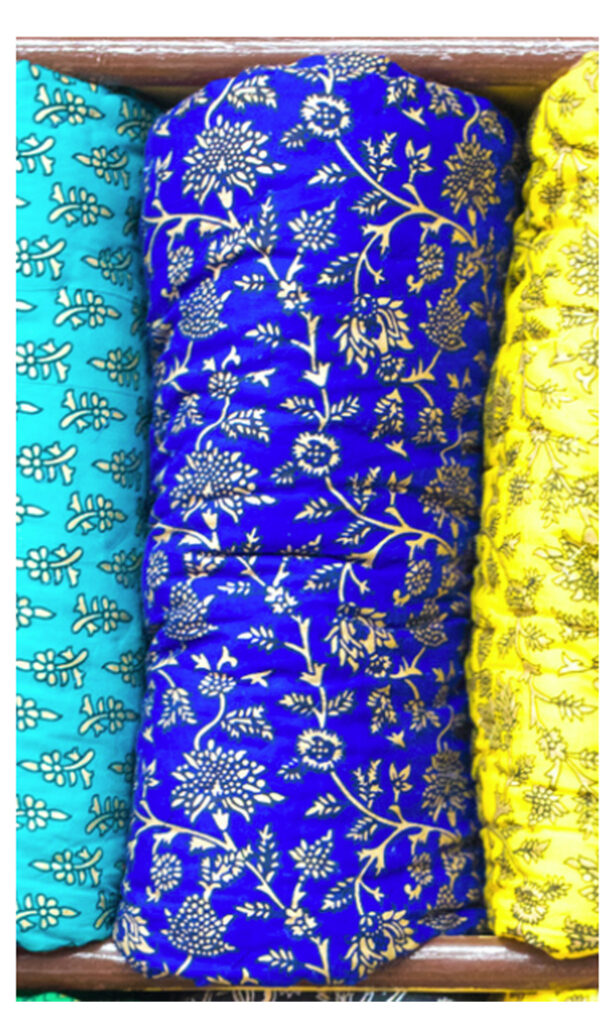Global events and shifting consumer behaviours continue to upend traditional business models across the supply chain. At all tiers, change is the only way to meet the manufacturing challenges that face an industry historically built for mass production at volume and continued growth. Whether technical or strategic – the textile industry must adapt and invest to minimise risk and reap the commercial benefits of technology. Only then can it strategically meet market demands and adapt at speed to address shifting consumer behaviours.

The Age of AI and Machine Learning
AI’s transformative effect across the supply chain continues to drive the agenda and to harness and streamline manufacturing prowess. Its impact cannot be understated. Across all sectors of business – AI is liberating time, creativity and production viability. In a market challenged by so many factors: Sustainability, Supply chain volatility, Consumer preferences and Localised economic instability – AI reinstates power into the hands of the orchestrator, the principal host and its strategic partnerships.
Generative AI is now a valuable tool for the creative, its not something to be feared, on the contrary – AI fires the imagination and will rewire creativity in the years ahead.
AI Tools simplify and automate the design process, software such as Six Atomic utilise AI to take 2D garment patterns and render as a 3D visualisation, the software allows for acute styling and adjustment to the body shape and the required fit. Six Atomic plugs seamlessly into many of the preferred design tools such as Clo and Browzwear. The technology drastically reduces the time is takes to create apparel garments, along with helping to create a more sustainable design and production process through reducing the need for samples, therefore reducing waste.
New technologies continue to rewire creativity and to build on existing process. Metail is a ground-breaking software leveraging AI – a leap that is set to revolutionise both garment manufacture and the retail experience. The technology bridges the gap between digital and physical – and can apply 3D garments in real-time onto real-life models. Their latest developments focus on the application of apparel clothing onto moving video.
Investing in AI is no longer optional, it’s an intrinsic tool for commercial success regardless of where you exist within the supply chain. For the print community it offers a window into the workflow of production, it controls manufacturing equipment for maximum efficiency and removes or reduces waste.
Seamless technology – Single Step Solutions and Print Innovations
To meet shifting consumer preferences the buyer (retailer or consumer) is shifting to on-demand production.
Digital technology now readily delivers digitally printed textile product personalisation and customisation at speed. However, fulfilling the demand for such products has created a new tier of innovation for MIS. Print management information systems must now manage the entire order workflow electronically without human intervention wherever possible. Only then can we manufacture print-on-demand at scale efficiently.

The perfect storm for digital textile printing machinery, software and technology. Once connected to an intelligent, efficient workflow solution – Print on Demand can thrive. Delivering customised production at any volume across the R2R marketplaces for sewn products and the ever-expanding DTG Direct to Garment sector. AI and ML play a vital role in this process where creativity, digital textile machinery, product data, print information and order fulfilment are entwined and in tune.
As a result, strategic technology partnerships become increasingly important in the manufacturing sector.
Using KornitX technology, Hype a British streetwear brand catering to a wide range of consumers, create and design bright coloured garments. Their bold in- your-face impressions adorn t-shirts, children’s wear backpacks, hoodies, intimate apparel, and other pieces, and are sold via the company’s own website and a growing network of retailers, including Next, Zalando, BooHoo, John Lewis, and The Very Group.
“We like to see ourselves as a lifestyle brand,” said Jade Bell, Marketing Manager at Hype. “Hype is all about showcasing your individuality and personality, so we like to make sure our core band DNA values are showcased through our products. We have the Gen Z audience, the Millennials, the younger generation and also adults – a huge range of customers.”
At this time, Hype is operating in 27 countries; while the UK remains their largest market, the company is experiencing considerable growth throughout Europe and even the Far East. They are currently integrating with Walmart and Costco, as well, to expand the brand’s footprint in the US.
Smart Circular Design – Rewiring Creativity
On-demand technologies continue to drive the creator economy. Designers are empowered by digital process, freeing them from mass production. Utilising a digital workflow, products can be created, amended, and visualised in real-time across continents. 3D rendering applications offer accurate product simulation shortening the creative and manufacturing workflow to deliver accurate specifications for materials, style and production data on-demand, removing the wasteful requirement for sampling. When connected to an e-commerce environment – physical products are only manufactured at the point of sale – removing the requirement to hold finished stock.
Utilising the latest technology, the product designer can control both design and production variables in real time, to ensure that the products they create meet and deliver the specifications of a circular economy. Online and off, designers are harnessing the digital spectrum to showcase and engage with their customers. As they do so, they push the boundaries of creativity, spawning a new generation and a powerful creative economy.
Knowledge share across the supply chain is now essential. Whilst the products we create are increasingly in tune with consumer preferences, we also have to engage with our manufacturing partners and dive deeper into the supply chain to understand the fibres and the processes of production we specify – to ensure that we maximise their longevity – only then can we truly manufacture for a circular economy.

Nearshore/Onshore – Shifting Market Behaviours
Macroeconomic shifts continue to drive the restructure of the textile supply chain. All tiers are affected, and in such a volatile market – business seek to find stability. Strategic partnerships are key. Stock is to be avoided, in part due to the fluctuating cost of manufacture, and also to meet the consumers need for continual gratification and the speed with which trends ebb and flow.
Seasonal production is no longer a viable option – regardless of scale for the retail community. Holding large stocks (as we did in the past) is commercial suicide for the retail community. Product launches are no longer seasonal, and the most successful business in this sector now replenish their stocks to meet market demand. These trends are increasingly upending traditional supply routes. Lengthy lead- times are not acceptable. Buyers must dance to the tune of the consumer, and to do so they must accelerate their design and production cycles. To do so, they must relocate production and localise supply and product fulfilment. Again, strategic partnerships are critical for stability and an important investment for on-demand production and commercial success.
Supply Chain Visibility – Transparency and Traceability
The demand for data cannot be underestimated. Across the supply chain. End-to-end, manufacturing clarity is essential. Every component of production must be aligned if we are to manufacture on-demand. Harnessing this information not only delivers manufacturing efficiency but it’s also an important factor in our community’s journey towards sustainability.
“Greenwashing” is a dangerous game for the retail community, products must now be certified and increasing regulated. Across the globe, product regulation must be adhered to and accredited. Digital transparency must be delivered within all partnerships if we are to meet the needs of our customers and retain market share. Investing in transparency and traceability will cement prosperity.
Recycling and Reducing Waste
Do we truly understand the products we create? Are we designing products with innate circularity at their conception? Material science is a key part of the designer’s specification process, and a greater understanding of the fabrics and production processes we source is now demanded – we have to be certain that the products we offer our consumers are environmentally efficient.
A growing trend for “repurposing” means much more (put simply) than rental. As stated earlier, if we understand the fibre content of the products, we create we make the correct fabric choices and can then specify the most environmentally efficient method of printed production to ensure that we design and create for “end-of-life”.
In doing so we can then harness the true value of the materials we choose. As recycling and fibre identification technologies advance, they continue to deliver accurate information and new materials for the designer to make an informed choice at product conception.
Lenzing and Sodra recently partnered to create OnceMore®, a new recycling method that makes it possible to process and recycle a blend of cotton and polyester. Their award-winning collaboration resulted in a new raw material, a bio-textile that can be manufactured at scale and has since been recognised as a valuable innovation and a step towards zero textile waste supply chain. As part of the cooperation, the companies shared their knowledge with each other and now continue to jointly develop processes to enable the wider use of cellulose-based used textiles on a commercial scale.
In summary, consumer behaviour and global retail challenges are driving innovation. Across the supply chain – from the software driving automated manufacturing and print technology, to new raw biomaterials and recycling – innovations are focussed on environmental process to deliver commercial success.
To weather the storm and to secure a viable future for our businesses – the textile industry must innovate, re-equip and seek to invest in and build strategic partnerships across the supply chain.
